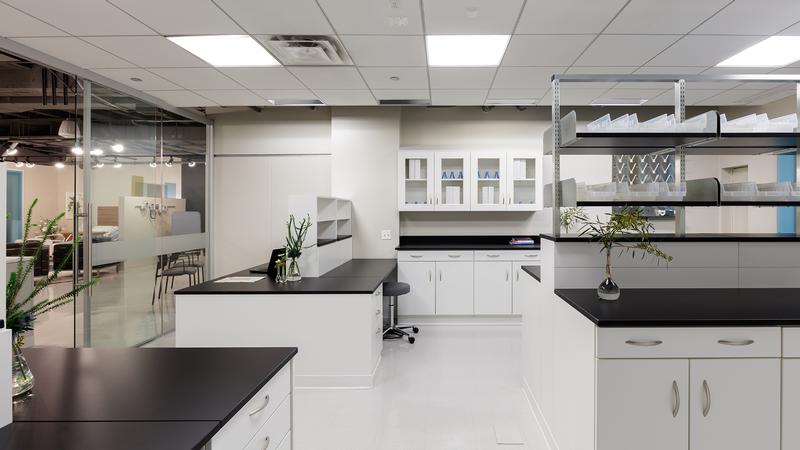If you enter any modern medical facility, you’ll quickly notice that the sterile, white-walled clinical spaces of yesterday have given way to warmer, more welcoming environments. But don’t let the softer colours and comfortable furniture fool you. Every single design decision in healthcare interior design has been carefully considered to serve a dual purpose: creating spaces that heal both the body and the spirit while maintaining the highest standards of infection control.
Welcome to the delicate dance of healthcare interior design, where beauty and safety waltz together in perfect harmony. It’s a world where choosing the wrong upholstery fabric could literally be a matter of life and death, and where a design-build interior partner becomes as essential as any medical equipment.
The Critical Balance Between Sanitation and Aesthetics
Healthcare interior design is no longer just about creating functional spaces, it’s about creating environments that support healing while rigorously preventing the spread of infection. When building clinics, this balance becomes even more crucial. Unlike hospitals, clinics often serve as the first point of contact between patients and the healthcare system, making first impressions vital while maintaining stringent safety standards.
Modern healthcare interior design must address multiple competing demands: spaces need to be welcoming enough to reduce patient anxiety, efficient enough to support busy medical staff, and safe enough to prevent the spread of healthcare-associated infections. The Centers for Disease Control estimates that approximately 722,000 healthcare-associated infections occur annually in U.S. hospitals, with around 75,000 patients dying during their hospitalizations. This staggering statistic underscores why infection control cannot be an afterthought in healthcare interior design.
The design-build interior partner approach has emerged as the gold standard for healthcare facilities because it integrates these competing demands from the very beginning of the project. Rather than treating aesthetics and infection control as separate concerns, a skilled design-build interior partner weaves them together into a cohesive whole that serves both patients and staff.
The Strategic Role of Materials in Healthcare Interior Design
The foundation of successful healthcare interior design lies in material selection. Every surface, from flooring to furniture, must be chosen with infection control as the primary consideration. Non-porous materials such as vinyl, polyurethane, and treated fabrics like Crypton and Nano-Tex have become the backbone of modern healthcare interior design.
These materials resist liquids and can withstand the harsh chemical cleaning regimens required in medical settings. When seats are covered in standard fabrics, bodily fluids can seep into the foam, creating breeding grounds for bacteria. However, materials like powder-coated steel, high-pressure laminates, and specially treated vinyl create seamless, easy-to-clean surfaces that prevent pathogen accumulation.
Office furniture design in healthcare settings has evolved dramatically as manufacturers focus on infection prevention. Modern healthcare furniture incorporates antimicrobial technologies, seamless construction, and non-porous surfaces that eliminate the cracks and crevices where bacteria traditionally hide. This evolution represents a fundamental shift from choosing furniture based solely on appearance or cost to selecting pieces that actively contribute to infection control.
The Advantages of Hiring Healthcare Interior Designers
The decision to hire a healthcare interior designer brings numerous advantages that extend far beyond aesthetic appeal. These professionals bring specialized knowledge of infection control regulations, material science, and the unique operational requirements of medical facilities.
A professional healthcare interior designer understands the complex interplay between form and function in medical environments. They know which materials can withstand frequent disinfection without deteriorating, how to create layouts that support efficient workflow while maintaining infection control protocols, and how to integrate advanced medical technologies seamlessly into the design.
The expertise extends to commercial interior design principles that improve staff efficiency and patient satisfaction. Well-designed healthcare spaces have been shown to reduce staff burnout, improve patient outcomes, and even decrease the length of hospital stays. The strategic use of natural light, calming colours, and biophilic elements creates environments that support healing while maintaining rigorous safety standards.
Healthcare interior designers also navigate the complex regulatory landscape that governs medical facilities. They ensure compliance with standards from organizations like the CDC, Joint Commission, and local health departments. This expertise prevents costly mistakes and ensures that facilities meet all necessary certifications for operation.
The Challenges of Working Without Professional Design Support
While hiring a healthcare interior designer brings numerous advantages, there are some considerations that facility owners must weigh carefully. The primary concern is often cost, as professional healthcare interior design services represent a significant investment in the project budget.
Another potential challenge is finding designers with appropriate experience in healthcare settings. Not every interior designer understands the unique requirements of medical facilities, and working with someone who lacks this specialized knowledge can lead to costly mistakes and compliance issues.
The design process can also add time to project timelines, as thorough planning and coordination with various stakeholders requires careful attention to detail. However, most healthcare facility owners find that this upfront investment in planning prevents far more costly delays and revisions during construction.
Some healthcare organizations may also struggle with the coordination required between multiple design professionals, contractors, and medical staff. This is where the design-build interior partner approach proves most valuable, as it provides a single point of contact for all design-related decisions.
How Interior Design Teams Support Contractors
Healthcare construction presents unique challenges that can overwhelm even experienced contractors. The need to maintain infection control during construction, coordinate with ongoing medical operations, and comply with complex regulations creates a demanding environment where mistakes can have serious consequences.
Professional healthcare interior design teams serve as essential partners for contractors navigating these challenges. They provide detailed construction documents that eliminate guesswork, specify materials that meet both aesthetic and infection control requirements, and coordinate with medical staff to ensure construction activities don’t interfere with patient care.
The interior design team acts as a bridge between the clinical requirements of healthcare and the practical realities of construction. They understand which work can be performed during normal operations and which activities require special containment measures to prevent contamination.
These professionals also help contractors understand the complex regulatory environment governing healthcare construction. They ensure that all work meets infection control standards, accessibility requirements, and specialized medical equipment needs.
Creating Smooth and Hassle-Free Construction Processes
The integration of healthcare interior design teams into construction projects creates dramatically smoother processes for everyone involved. Rather than discovering problems during construction, potential issues are identified and resolved during the design phase.
A design-build interior partner coordinates all aspects of the project, from initial space planning through final commissioning. This comprehensive approach ensures that electrical systems support medical equipment, plumbing accommodates specialized fixtures, and HVAC systems maintain the air quality standards required in healthcare settings.
The design team also manages the complex logistics of healthcare construction, including material deliveries, storage of sensitive equipment, and coordination with medical staff schedules. This level of coordination prevents the delays and conflicts that commonly plague healthcare construction projects.
By maintaining constant communication with all stakeholders, the healthcare interior design team ensures that everyone works from the same set of plans and specifications. This eliminates the miscommunication that causes costly change orders and schedule delays.
The Evolution of Office Furniture Design in Healthcare
Office furniture design has undergone a revolution in healthcare settings, driven by advances in material science and a deeper understanding of infection control principles. Modern healthcare furniture must serve multiple masters: it must be comfortable for patients and staff, durable enough to withstand constant use, and designed to prevent the accumulation of pathogens.
The latest office furniture design in healthcare emphasize seamless construction, antimicrobial materials, and easy maintenance. Manufacturers now produce chairs without upholstery on high-touch surfaces, tables with integrated antimicrobial properties, and storage solutions that eliminate the gaps where bacteria traditionally hide.
These advances in office furniture design have been driven by a growing understanding of how furniture contributes to healthcare-associated infections. Studies show that properly designed and maintained furniture can reduce infection rates by up to 70 percent.
The integration of technology into office furniture design has also transformed healthcare environments. Modern furniture incorporates charging stations, wireless connectivity, and even built-in monitoring systems that track usage and maintenance needs.
Frequently Asked Questions (FAQ):
Why is infection control so important in healthcare interior design?
Infection control is crucial because healthcare-associated infections affect approximately 722,000 patients annually in U.S. hospitals, with around 75,000 deaths. Healthcare interior design directly impacts infection rates through material selection, surface design, and space planning. Proper design choices can reduce infection transmission by up to 70 percent by eliminating surfaces where pathogens can hide and multiply.
What are the main advantages of hiring a healthcare interior designer?
The main advantages include specialized knowledge of infection control regulations, expertise in medical facility operations, understanding of appropriate materials and technologies, and ability to navigate complex regulatory requirements. Professional healthcare interior designers also improve staff efficiency, patient satisfaction, and ensure compliance with health department standards, ultimately saving money through reduced mistakes and better outcomes.
What are the potential disadvantages of hiring a healthcare interior designer?
The primary disadvantages include the cost of professional services, which can be significant for smaller facilities, and the potential for longer project timelines due to thorough planning requirements. There’s also the risk of hiring someone without adequate healthcare experience, which could lead to compliance issues and costly mistakes.
The Future of Healthcare Interior Design
As healthcare continues to evolve, so too must healthcare interior design. The COVID-19 pandemic has accelerated interest in antimicrobial surfaces, touchless technology, and flexible spaces that can adapt to changing needs.
The design-build interior partner approach is becoming the standard for healthcare projects as facility owners recognize the value of integrated design and construction services. This approach ensures that infection control considerations are woven into every aspect of the project from the very beginning.
Emerging technologies like antimicrobial coatings, self-disinfecting surfaces, and advanced air filtration systems are being incorporated into healthcare interior design. These innovations promise to make healthcare environments even safer while maintaining the aesthetic appeal that supports healing.
Sustainability is also becoming increasingly important in healthcare interior design, with designers seeking materials and systems that minimize environmental impact while maintaining infection control standards.
Key Takeaways
- Healthcare interior design must balance aesthetics with strict infection control requirements to create healing environments
- Professional healthcare interior designers bring specialized knowledge of materials, regulations, and medical facility operations
- Non-porous materials like vinyl, polyurethanes, and antimicrobial surfaces are essential for infection prevention
- Design-build interior partners provide comprehensive coordination that prevents costly delays and change orders
- Office furniture design has evolved to prioritize infection control through seamless construction and antimicrobial properties
- Commercial interior design principles improve staff efficiency and patient satisfaction when properly applied
- Interior design teams help contractors navigate complex healthcare construction challenges and regulatory requirements
- The cost of professional healthcare interior design services is typically offset by improved outcomes and reduced mistakes
- Office interior design in healthcare settings must support both clinical operations and patient comfort
- Future healthcare interior design will incorporate emerging technologies while maintaining focus on infection control
The world of healthcare interior design represents one of the most challenging and rewarding areas of commercial interior design. It requires professionals who understand that every decision from the choice of flooring material to the selection of office furniture design can impact patient outcomes and staff safety. The design-build interior partner approach has emerged as the most effective way to navigate these challenges, providing the expertise and coordination needed to create healthcare environments that truly heal.
As we look to the future, healthcare interior design will continue to evolve, incorporating new technologies and materials while maintaining its fundamental commitment to safety and healing. The professionals who master this balance will be the ones who shape the next generation of healthcare spaces, creating environments where beauty and safety work together to support the miracle of healing.

